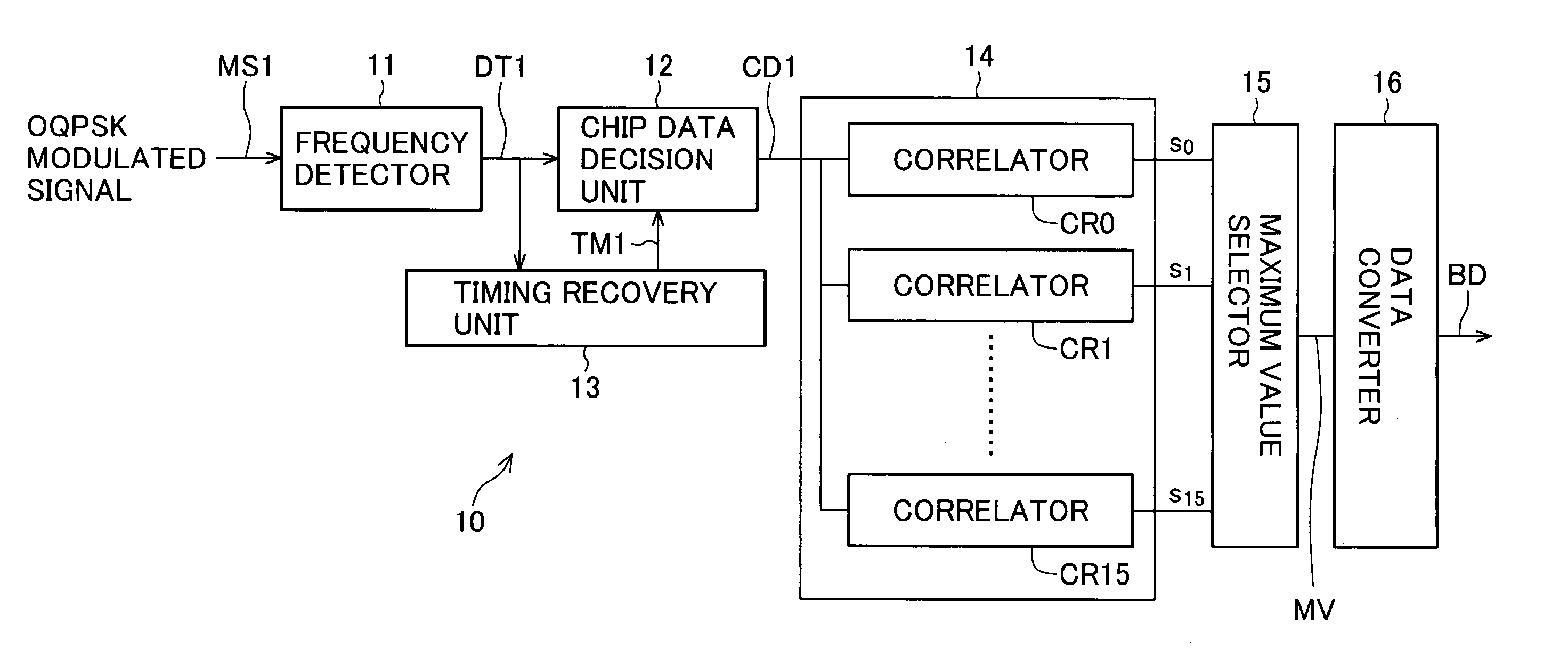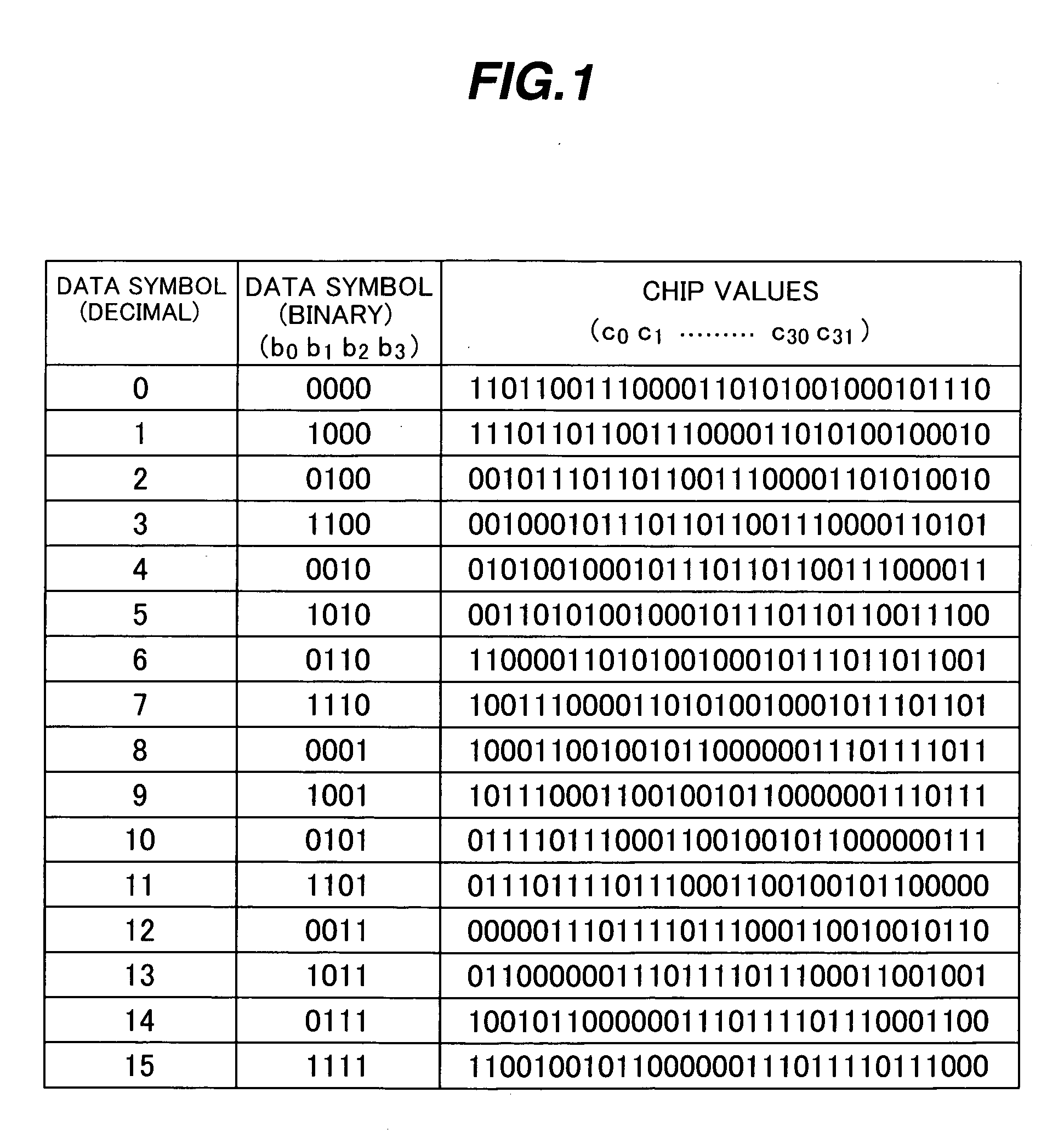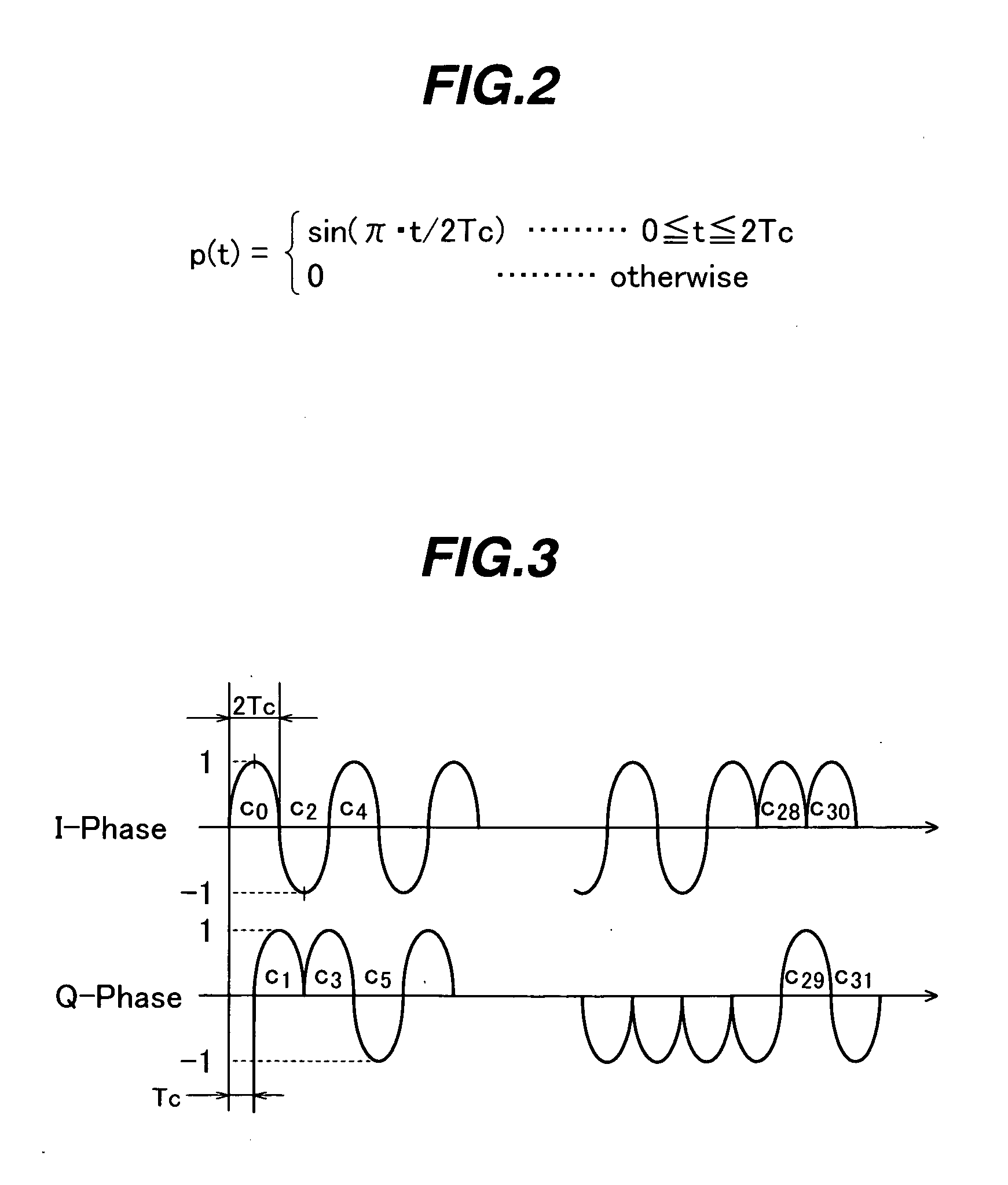Spread spectrum demodulator employing frequency detection
a spectrum demodulator and frequency detection technology, applied in the field of demodulators, can solve the problems of large circuit space, complex and unavoidable large synchronous detection oqpsk demodulator, and achieve the effect of reducing the number of circuits, and reducing the complexity of the demodulator
- Summary
- Abstract
- Description
- Claims
- Application Information
AI Technical Summary
Benefits of technology
Problems solved by technology
Method used
Image
Examples
first embodiment
[0030] Referring to FIG. 4, the first embodiment is a demodulator 10 comprising a frequency detector 11, a chip data decision unit 12, a timing recovery unit 13, a correlation unit 14, a maximum value selector 15, and a data converter 16.
[0031] The frequency detector 11 receives a modulated signal MS1, performs frequency detection, and outputs a frequency-detected signal DT1. The type of frequency detection performed is also known as frequency-shift keying (FSK) demodulation, and the detected signal DT1 will also referred to below as FSK demodulated data. Although the size of the frequency detector (FSK demodulator) 11 depends on the specific frequency detection method employed, the frequency detector 11 can be realized in a much smaller circuit than a conventional synchronous detector.
[0032] The modulated signal MS1 is a direct-sequence spread spectrum communication signal modulated according to conditions (a) to (d) above. If the modulated signal MS1 has the upper waveform shown...
second embodiment
[0056] A second embodiment will be described below, focusing on the differences from the first embodiment.
[0057] The demodulator in the second embodiment takes advantage of the paired relationship among the correlation coefficients shown in FIG. 8 to reduce the number of correlators.
[0058] Referring to FIG. 10, the second embodiment is a demodulator 20 comprising a frequency detector 11, a chip data decision unit 12, a timing recovery unit 13, a correlation unit 14A, a maximum value selector 15, a data converter 16, and a subtraction unit 21. The number of correlators included in the correlation unit 14A is half the number in the correlation unit in the first embodiment: whereas the correlation unit 14 in the first embodiment includes sixteen correlators CR0 to CR15, the correlation unit 14A in the second embodiment includes only eight correlators CR0 to CR7. The subtraction unit 21 includes eight subtractors RD0 to RD7.
[0059] The frequency detector 11, chip data decision unit 12...
PUM
 Login to View More
Login to View More Abstract
Description
Claims
Application Information
 Login to View More
Login to View More - R&D
- Intellectual Property
- Life Sciences
- Materials
- Tech Scout
- Unparalleled Data Quality
- Higher Quality Content
- 60% Fewer Hallucinations
Browse by: Latest US Patents, China's latest patents, Technical Efficacy Thesaurus, Application Domain, Technology Topic, Popular Technical Reports.
© 2025 PatSnap. All rights reserved.Legal|Privacy policy|Modern Slavery Act Transparency Statement|Sitemap|About US| Contact US: help@patsnap.com



